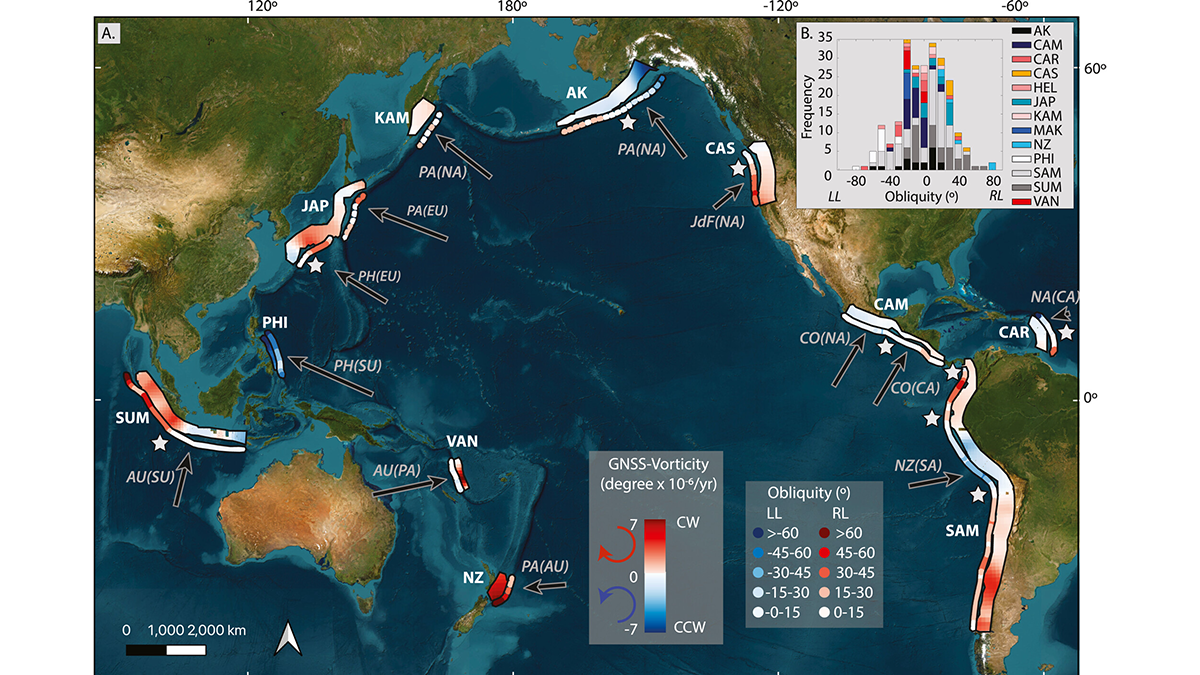Editors’ Highlights are summaries of recent papers by AGU’s journal editors.
Source: AGU Advances
Convergent plate margins associated with lithospheric subduction often exhibit pronounced along-strike curvature, shaped by the interplay of topography, sediment transport, plate interface strength, and deep slab dynamics. The bends and cusps of these plate boundaries are linked to variations in the tectonics of the overriding plate, influencing both long-term fault movements and earthquake patterns.
Morell et al. [2025] examine geodetic and geological timescale constraints on overriding plate deformation and explore how these correlate with the alignment of relative plate motions to the boundary strike. It has long been recognized that the degree to which deformation in the overriding plate is partitioned into translation and rotation is strongly influenced by this obliquity. However, this comparative analysis reveals that overriding plate deformation patterns remain remarkably consistent across different timescales, with no clear threshold obliquity value governing partitioning.
These findings have important implications for understanding strain energy distribution and perhaps dissipation minimization within the plate tectonic system. While a comprehensive theory is still lacking, this study offers new insights into the physics of transpressional systems, including the evolution of shear zone strength and fault system interactions.
Citation: Morell, K. D., Gilroy, K., Finley, T., & Harrichhausen, N. (2025). Subduction zone obliquity dictates global trench-parallel inner forearc deformation. AGU Advances, 6, e2024AV001468. https://doi.org/10.1029/2024AV001468
—Thorsten Becker, Editor, AGU Advances

